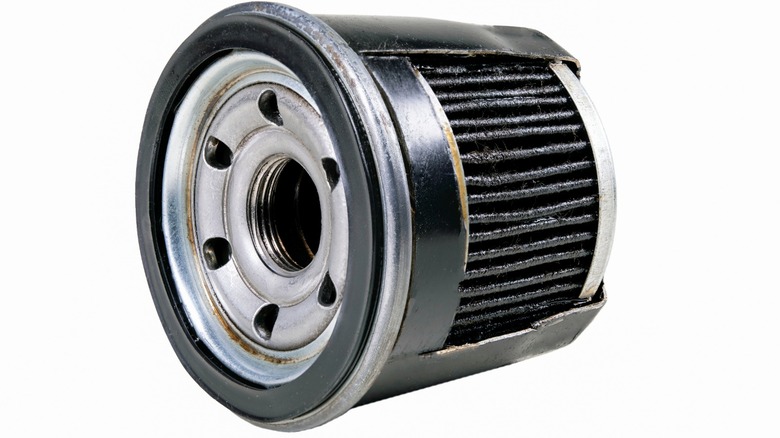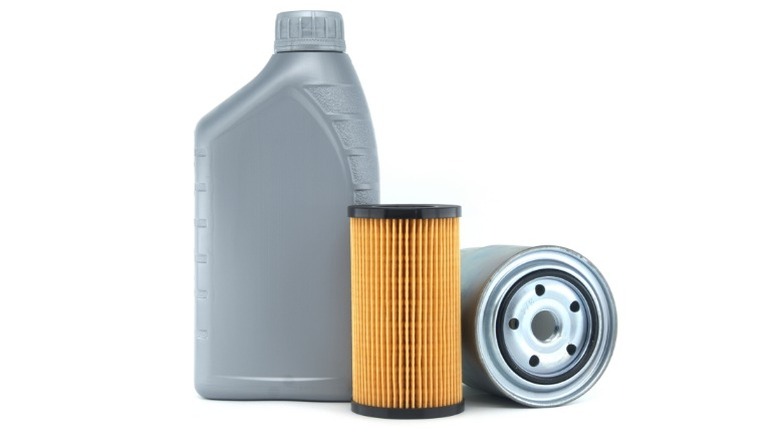What's Inside An Oil Filter And How Do They Work?
Cars with internal combustion engines — as opposed to electric vehicles, which still depend on a few fluids themselves — require various fluids to keep everything running smoothly. If you've been around vehicles for long enough, you probably already know that one of the most important fluids your car needs is engine oil. It's vital for providing the lubrication essential for keeping the engine's internal moving parts from grinding against each other and developing excess friction, while also working to help dissipate heat. However, your car's engine oil doesn't accomplish those feats on its own. It relies on the smooth function of the entire engine lubrication system to work properly, including an oil filter.
The filter's job is to prevent any debris or impurities from making their way to the engine. It contains an interior filter material, which can be made from a special type of pleated paper or a synthetic fiber. Oil filters also contain a gasket, which provides a seal between the oil filter housing and the filter, preventing oil loss and debris from getting into the system. The filter material is designed to allow oil to pass through but catch any gunk or impurities that may have accumulated in the oil sump.
However, the engine lubrication system depends on more than just the filter to keep your car running smoothly. As a former professional auto repair technician, I'll break it down for you. Here's everything you need to know about how your car's engine oil filter works to keep your wheels turning.
How does an engine oil filter work?
Engine oil filters come in two primary styles: screw-on and canister. They perform the same function, and the primary differences between the two are appearance and the installation process. While screw-on filters come in a single replaceable unit, canister filters are just the interior filter material. They sit inside of a plastic canister, and you simply replace the interior filter and o-rings (if applicable) each time you change the oil. Apart from those differences, the two filter styles function in basically the same way.
To understand how engine oil filters work, it may be helpful to break down the engine lubrication system first. The primary parts of the system include the oil pan or sump, an oil pump, the filter, and a series of passages or galleries through which the oil travels. Most of your car's engine oil hangs out in the sump. When you start the engine, the pump begins sucking oil up from the sump and routing it toward the oil filter. From there, the oil passes through the filter to remove any impurities or debris before heading to the engine, where the oil travels through the galleries or passages to provide lubrication and help remove excess heat. After all that, the oil returns to the sump where it cools down before starting the cycle all over again.
The filter is an integral part of the system. Without it, you'd be much more likely to develop issues like engine sludge and car overheating problems, and the engine itself would most likely last for a substantially shorter amount of time. That's why it's so important to never skip an oil change or oil filter replacement.

